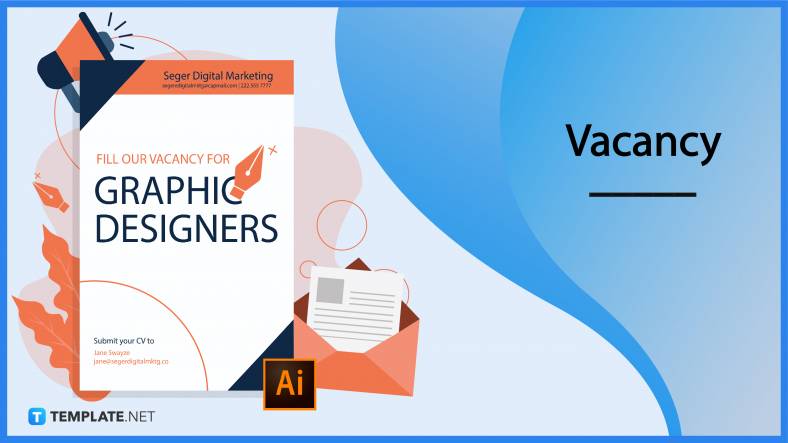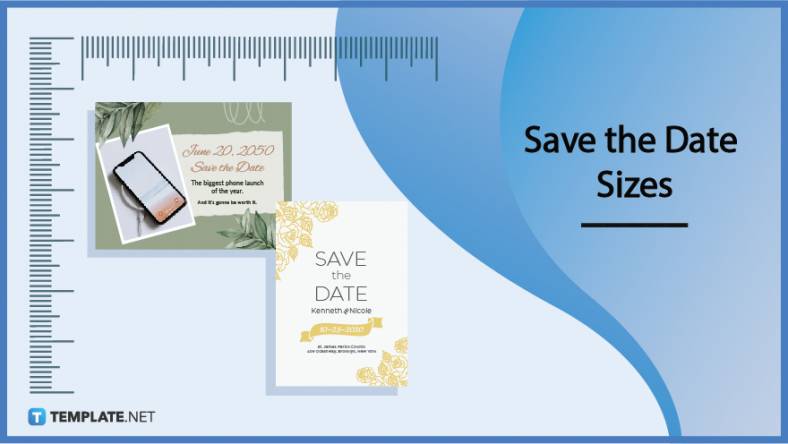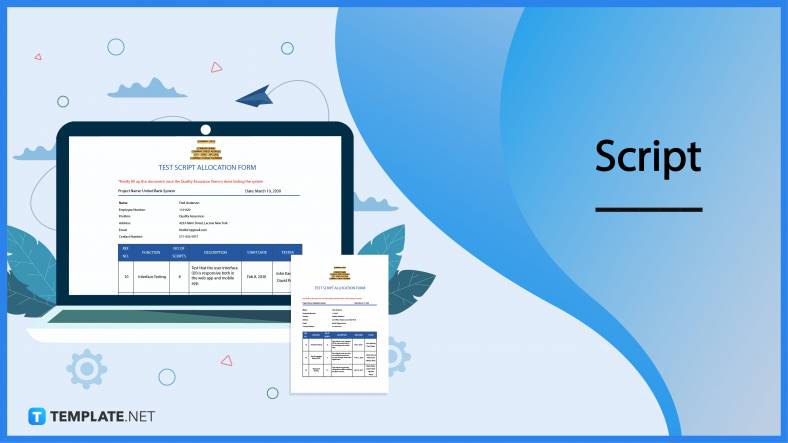![How To Make/Create an Invitation in Google Docs [Templates + Examples]](https://images.template.net/wp-content/uploads/2023/07/How-To-Make_Create-an-Invitation-in-Google-Docs-Templates-Examples-788x443.png)
How To Make/Create an Invitation in Google Docs [Templates + Examples]
To formally invite someone or a group of people to an event or activity, you will need to send out…
Apr 15, 2024
Icons are pictures, images, or illustrations that represent a concept, thought, or message to individuals who see or come across them, relaying valuable information to help with related activities. These representations are prevalent in different setups, including computers, laptops, tablets, and even social media platforms representing specific ideas or topics.
An icon is a graphical representation or symbol that people see on computer screens to represent an application, object, file, or function, like a command to initiate actions.
Icons are also common on other electronic devices, including smartphones and tablets, that are usually features of a GUI or graphical user interface.
An icon is a small visual representation of a program, component, or file that a person sees on a desktop screen to represent or lead to another action that is part of the computer’s graphical user interface (GUI) or on websites. Icons are part of a computer’s GUI systems, including Windows and Mac operating systems, intending to aid users in identifying the type of file that it represents. Most icons can be clickable to redirect users to a specific action, including accessing a gaming platform, sending work emails, or accessing social media pages.
Many envelope icons are vectors that users can download in either SVG, PNG, PSD, or ICON FONT, enabling multiple programs and applications to access the design. These envelope icons are prevalent when creating messaging applications, programs, or features, that demonstrate capabilities to access and download into their devices. Produce the icon to complement applications that aim to give a line of communication to different users, especially when they are communicating through email services.
These packaging icons are common in the mailing and packaging businesses that deal with transferring goods or materials, all denoting the procedures when handling, storing and sending a package. Several of these symbols apply to the same box or parcel to maximize safety during shipping processes and procedures. To preserve a sender’s transported products before they reach the recipient’s address, the personnel responsible for handling the packaging will indicate if the package is fragile.
Robot icons are more common in robotics, sciences, and technology, concentrating on the use or feature of specific robotic materials, devices, or systems. Individuals can also use icons to refer to specific methods or processes when a group or organization wants to create modern infographics for their reports or presentations. When selecting the icons to use, remember to associate a specific idea or action that the individual wants to elicit to an audience to make the graphic effective.
Whether a group or an individual creates an interactive presentation of wedding activities or develops a program or application that centers around marriage preparations, wedding icons can help. Users can generate ideas, understand information, or acquire knowledge, depending on the icon. Constructing wedding icons relates to different objects or symbols during a wedding ceremony, like wedding rings, doves, wedding bells, ribbons, and other related things associated with the event.
Marketing icons are images, symbols, or designs that help consumers associate a brand with a particular product or business. People are more inclined to purchase a certain product in the future when they see an icon connected to that brand or product. In particular, if two companies provide comparable products, an icon will be one of the ways customers decide which one to purchase. Icons also aid in the brand and product differentiation.
Books relay information to their audiences regarding various topics, taking readers into situations, places, and backgrounds. Book icons enable book lovers to associate actions or ideas for their activities, including an open book icon for those books in their current reading list, a bookmark icon for a particular page reading, or a closed book icon for books they completed. These icons help individuals keep track of their activities and tasks in an organized and well-constructed manner.
Location icons or markers commonly describe or indicate a person’s current location or a destination they want to visit, visible when looking at a map. These markers enable individuals to pinpoint exact addresses, places, or establishments, prevalent in applications that involve tracking or finding specific areas and buildings, like delivery apps or maps. Use the location icon for in-app navigation or as an interactive icon on mobile devices.
A transparent icon is one without a background picture or illustration that companies and individuals can use for packaging, marketing, printing, or completing online content. These icons are versatile graphic design components that are used to make it easier to incorporate the icon on any surface. Different types of icons in different industries can have transparent icons by editing and saving the graphic design illustration or image as a PNG file with a transparent background.
The recycle icon is an internationally recognized symbol that organizations implement to identify whether a particular item or object is recyclable or whether a trash bin can only store recyclable materials for processing. The icon helps people classify whether the things they have are recyclable. Recycle icons are triangular consisting of arrows that look like they are chasing each other, with recyclable items ranging from cardboard boxes to paper notebooks.
Graph icons represent various graphs types of graphs on a webpage or an application, telling users the classification of graphs they can view or use. Graph icons represent diverse types of graphs, including bar, line, area, pie, column, or bubble graphs, that organizations and individuals use to represent data. These icons are prevalent in programs that enable users to create various graphs, like Microsoft, Google, and Apple programs to present a visual representation of numerical information.
Icons are representations of objects through shapes, illustrations, and forms that help users quickly and effectively accomplish tasks. Icons are an essential part of the user interface that visually expresses actions, ideas, and objects to bring benefits to the users. There are various uses for icons in business and personal settings, and knowing how to use them properly reaps benefits for growth and understanding, accompanied by their significance.
Bullet points or numbered lists help streamline the text by isolating information, but icons are preferred text sorters since they emphasize key ideas and takeaways. Iconography, a more imaginative alternative to the traditional list format, entails generating distinctive symbols further boost a business’ identity and deliver your message. It not only conveys this crucial information in a fun, understandable manner, but it also has personality and upholds the company’s ideals.
Text-heavy designs work well for some types of content, and infographics demand a more visual approach to help readers visualize the text. Individuals must always include icons that are extremely pertinent to the point for them to make sense. People should not incorporate icons only for the sake of including them; rather, individuals do it to make their designs clear and appealing to the eye.
Knowing where to begin can be challenging because there are so many distinct icon styles, including flat, outline, or isometric. When selecting or creating the iconography for your project, three elements are taken into account. It is crucial to choose the appropriate style, color, and size to maintain consistency and reflect your business identity.
Although using words to convey concepts is the most straightforward method, readers may become distracted by excessive amounts of text. Because of this, operating iconography to describe these capabilities and functions would be a better strategy. The user will find it much simpler to tie the icon to the notion and comprehend the features or functions described because they not only bring more diversity to the section but also reinforce the message with a visual explanation.
Icons help communicate concepts and serve as distinctive components in browsing a website to make it simpler to identify and follow key information around the site. Many styles of icons exist, and when individuals utilize a certain style of icons, it gains personality for the whole design, with some icons including shadows and reliefs, layers, geometric, 3D effects, etc. For a more corporate design, it is crucial to select icons that aesthetically match the website’s aesthetics.
An icon design grid helps to plot out the shapes and forms of the logo to keep the entire icon design consistent, arranging the balance and visualization of the logo.
The icon’s color scheme impacts and affects an audience’s emotional state, evoking feelings and emotions that companies can design for their target market.
Shapes on icons represent geometry forms, including squares, triangles, rectangles, circles, or hexagonal shapes to develop an art form or illustration for the icon.
Whitespace is any character or series of characters representing a horizontal or vertical space in illustrations, indicating the sections of a page without any markings or print.
The sharp angles or edges that individuals can find in an icon design or illustration represent intensity, hazard, or dangers, while round and softened angles and edges relay ease, friendliness, and comfort.
Curves are one of the most noticeable design areas that make the difference between professional and amateur concepts, using vectors to develop uniformity.
1. Determine the Icon Size
2. Specify the Purpose of Creating the Icon
3. Select the Icon Templates
4. Always Use a Grid
5. Begin with Simple Geometric Shapes
6. Use Angles, Curves, and Corners for Precision
7. Utilize Consistency in Design Elements
8. Do Not Overuse Details and Decorations
Icons represent a specific object classification or category, with it being similar to the actual product or feature, making it easier for individuals to distinguish its representation, especially for natural objects.
Symbols, on the other hand, represent association with things and ideas over a specific period, like images of saints resembling what they stand for, making it an abstract concept that people learn over time to understand what they mean.
Icons are pictures or illustrations representing a product, action, or feature it portrays to be, like a floppy disk representing the save function or the X buttons depicting to close a window.
Signs or signages are visual representations of concepts or ideas, usually in the form of a drawing, illustrations, fonts, and letters, similar to traffic signs or directional signs.
Meanwhile, logos are text or images that are usually transparent representing a business’s name and profile in various industries, including fashion, like clothes and hats, banking, and commerce.
There are different icon sizes available in diverse GUI systems, and depending on the operating system that a computer, tablet, or smartphone runs in, sizes vary. One of the most common standard sizes for icons measures 16×16 pixels, and the other sizes complete the standard icon list.
Icons are found in different forms, including social media, applications, actions, and features, that people associate with to accomplish tasks or activities relevant to the icon’s function. There are numerous icon ideas that businesses and organizations can use for their programs or apps, sporting aesthetic components for Android, Windows, and Mac devices.
In using Microsoft products, the standard icons consist of the error, warning, information, and question mark.
An icon style is a visual representation or design of an icon that can be an outline, glyph, flat, or colored.
Successful icons are more of signs and warnings rather than illustrations, easy to comprehend, and possess no extraneous details.
The ultimate goal of an icon is to deliver a message or concept quickly and effectively.
Icons are strategic communication formats that send a message to their viewers much more quickly than words.
Yes, users can use a picture to personalize an icon.
An icon font is a font exclusively containing icon glyphs instead of alphanumerics.
The benefits of using icons include delivering the right message or information to audiences, optimizing navigational capabilities, and ensuring that visual representations are uniform and consistent.
Icons help to improve the lives of people by delivering understandable messages and concepts to individuals more quickly.
Using icons in learning, enables people to process messages and information quicker, associating them with concepts.
![How To Make/Create an Invitation in Google Docs [Templates + Examples]](https://images.template.net/wp-content/uploads/2023/07/How-To-Make_Create-an-Invitation-in-Google-Docs-Templates-Examples-788x443.png)
To formally invite someone or a group of people to an event or activity, you will need to send out…
![How To Create an ID Card in Google Docs [Template + Example]](https://images.template.net/wp-content/uploads/2023/07/How-To-Create-an-ID-Card-in-Google-Docs-Template-Example-788x443.png)
ID cards are used as a way to represent an individual to the company or organization they work or volunteer…
![How to Make an ID Card in Microsoft Word [Template + Example]](https://images.template.net/wp-content/uploads/2023/07/How-to-Make-an-ID-Card-in-Microsoft-Word-Template-Example-788x443.png)
ID cards are an essential part of any employee working for a company or an organization to be recognized as…
![How To Make/Create a Book Cover in Google Docs [Templates + Examples]](https://images.template.net/wp-content/uploads/2023/07/How-To-Create-a-Book-Cover-in-Google-Docs-788x443.png)
Aside from protecting a book, book covers are specifically designed to attract readers and convey the essence of the book.…
![How To Make/Create a Book Cover in Microsoft Word [Templates + Examples]](https://images.template.net/wp-content/uploads/2023/07/How-To-Create-a-Book-Cover-in-Microsoft-Word-788x443.png)
A book cover is the outer layer of a book that is used to protect its contents. Book covers are…

Job vacancy is a common scenario in companies and organizations. Employees leave for all kinds of reasons and when they…

Save the date sizes are usually the same size as a formal invitation. But there are a number of different…

Script is a popular word that is frequently used in the entertainment world. There are a variety of areas and usages…

Presentations may not look as pleasant as how you design them with pictures, animations, videos, and other graphic designs without…